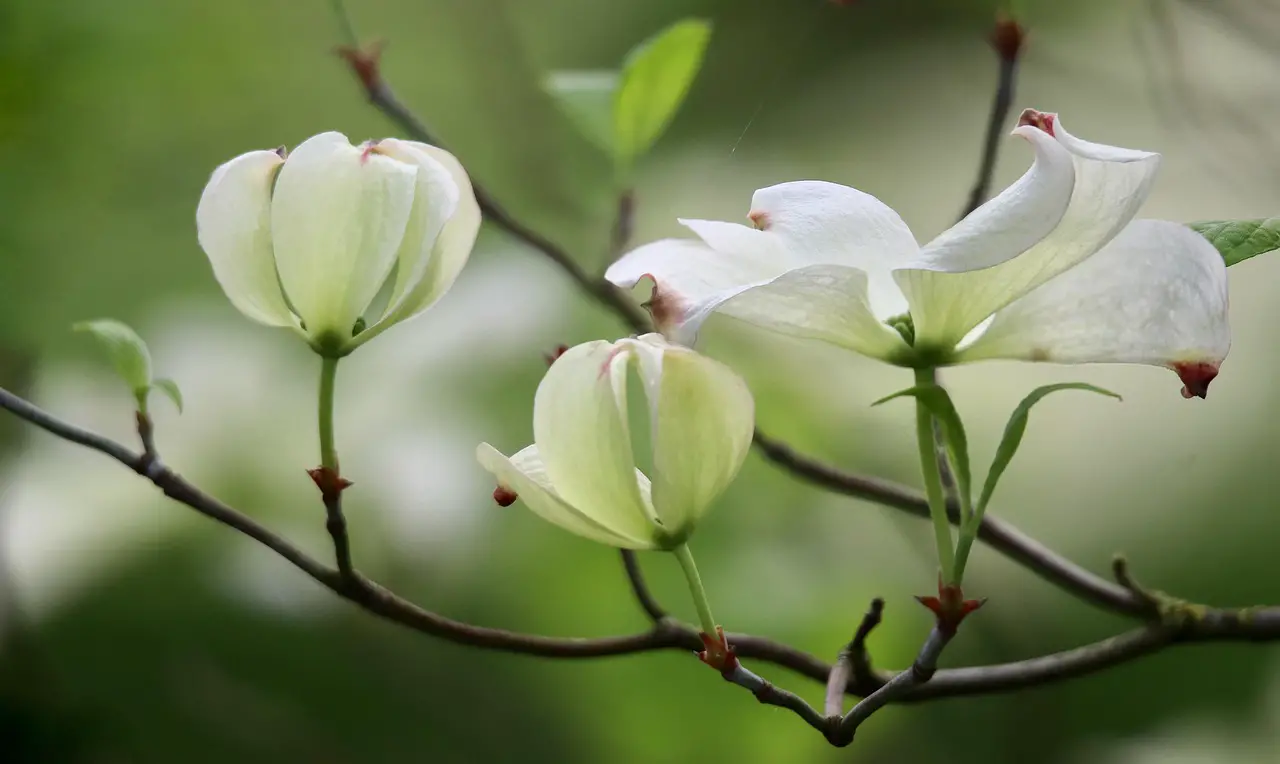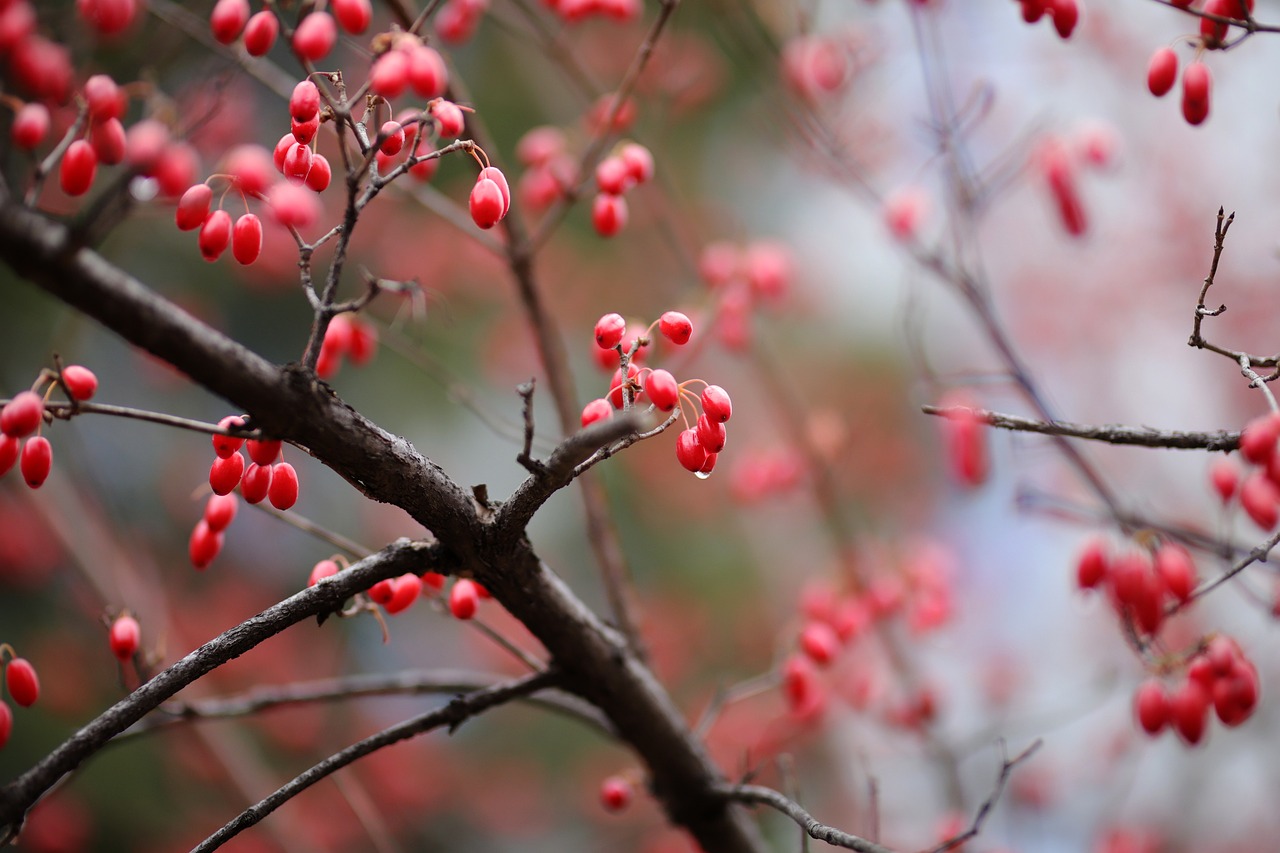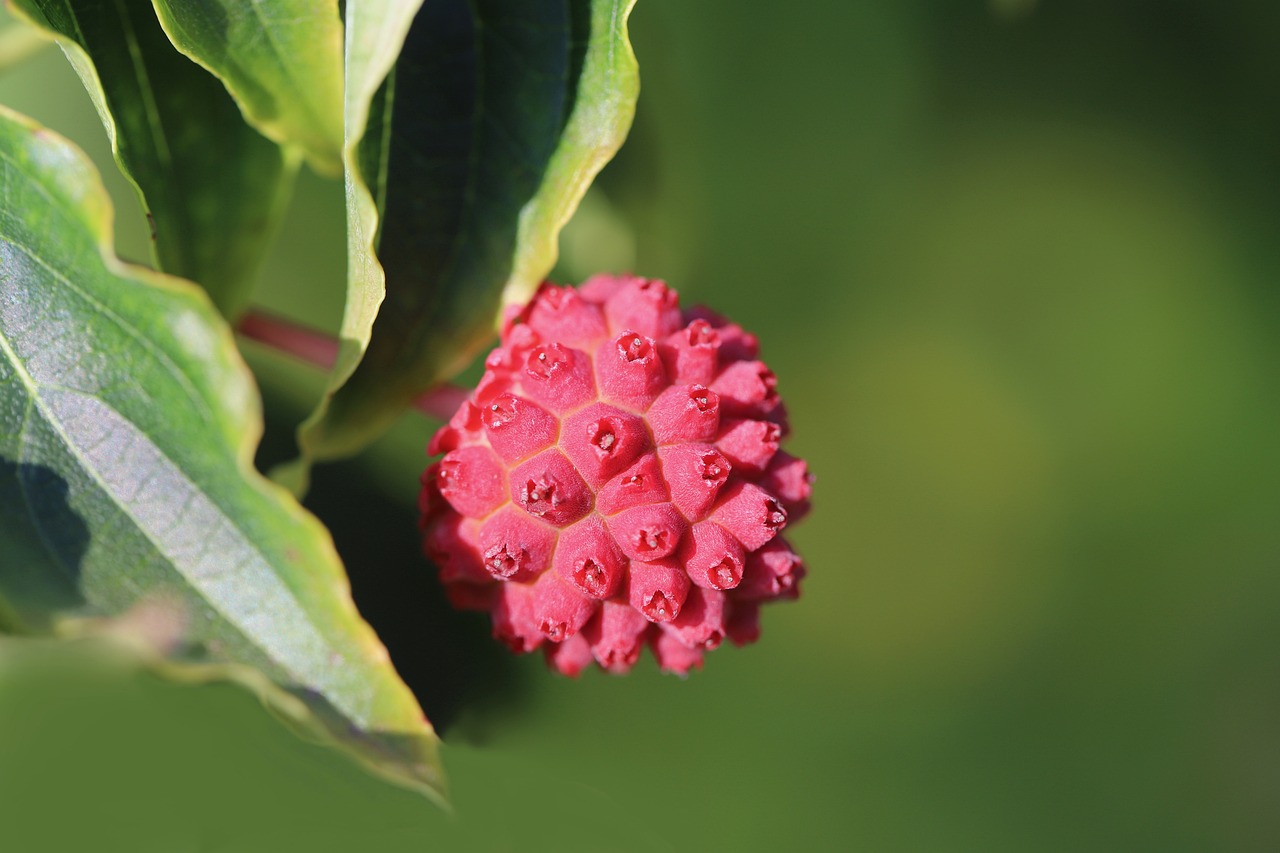Pruning dogwood trees effectively can significantly reduce long-term maintenance. Proper techniques promote healthy growth, enhance their natural beauty, and minimize disease risk. Regular pruning helps maintain the shape and structure, ensuring the tree thrives in various environments.
Dogwood trees are cherished for their stunning blooms and vibrant foliage. They bring beauty to gardens and landscapes, making them popular choices among homeowners and landscapers alike. However, like all trees, dogwoods require proper care to flourish. Pruning is a vital aspect of this care. It not only helps maintain the tree’s health but also enhances its aesthetic appeal.

Understanding the best practices for pruning dogwood trees can lead to a more manageable and visually pleasing tree over time. Many factors affect how and when to prune these trees. Knowing the right techniques can help achieve optimal results while minimizing the need for constant upkeep.
Benefits of Pruning Dogwood Trees
Pruning dogwood trees provides several benefits that contribute to their long-term health and beauty. Here are some key advantages:
- Improves air circulation within the tree’s canopy, reducing the risk of fungal diseases.
- Enhances light penetration, promoting better growth of leaves and flowers.
- Removes dead or diseased branches, preventing further damage to the tree.
- Shapes the tree for aesthetic purposes, creating a more appealing landscape.
- Encourages new growth, resulting in more vibrant flowers in the spring.
These benefits highlight why regular pruning is essential for keeping dogwood trees healthy and looking their best. By investing some time in pruning, homeowners can ensure that their trees remain strong and beautiful for years to come.

When to Prune Dogwood Trees
The timing of pruning is crucial for successful outcomes. Pruning at the wrong time can lead to damage or stress for the tree. The best time to prune dogwood trees is during late winter to early spring, just before new growth begins. This timing helps minimize stress on the tree while allowing it to recover quickly.
However, there are specific considerations based on the age and type of dogwood tree:
| Type of Dogwood | Best Time to Prune | Notes |
|---|---|---|
| Flowering Dogwood | Late Winter to Early Spring | Avoid pruning after buds form to prevent removing flowers. |
| Cornus Kousa (Kousa Dogwood) | Late Winter | Prune lightly to maintain shape and size. |
| Cornus Florida (Florida Dogwood) | Early Spring | Prune after flowering for optimal health. |
Proper timing ensures that dogwood trees can heal effectively after pruning. Avoiding late spring or summer pruning is advisable, as this can interfere with flower development and lead to unnecessary stress.

Essential Pruning Techniques
To achieve minimal long-term maintenance, employing correct pruning techniques is vital. Here are some essential methods:
- Thinning: Remove select branches to improve air circulation and light penetration.
- Heading: Trim back longer branches to encourage bushier growth.
- Cleaning: Remove dead, damaged, or diseased wood to promote overall health.
- Shaping: Maintain a desired shape while allowing natural growth patterns.
Each technique serves a unique purpose and helps maintain the structural integrity of the tree. By following these practices, gardeners can keep their dogwoods healthy while reducing future maintenance needs.
Tools for Pruning Dogwood Trees
Having the right tools is essential for effective pruning. The following tools are recommended for maintaining dogwood trees:

- Hand Pruners: Ideal for small branches and detailed work.
- Loppers: Useful for cutting thicker branches that are out of reach.
- Pruning Saw: Best for larger limbs that need removal.
- Gloves: Protect hands during the pruning process.
- Ladder: Necessary for reaching higher branches safely.
Using the appropriate tools will make the pruning process easier and more efficient. It’s essential to keep tools clean and sharp to ensure clean cuts that promote healing.
By understanding these foundational elements of pruning dogwood trees, homeowners can engage in proactive care that leads to minimal long-term maintenance. With thoughtful attention, these beautiful trees can thrive and add value to any landscape.
Common Mistakes to Avoid When Pruning Dogwood Trees
Pruning can be a delicate process, and there are several common mistakes that gardeners should avoid to ensure the health and beauty of their dogwood trees. Recognizing these pitfalls can help maintain the tree’s integrity and longevity.
- Pruning at the Wrong Time: Timing is crucial. Pruning too late in the season can remove flower buds, resulting in fewer blooms.
- Over-Pruning: Removing too many branches can stress the tree. Aim for a balanced approach to maintain its structure.
- Neglecting Cleaning: Failing to remove dead or diseased wood can lead to infestations and diseases spreading within the tree.
- Using Dull Tools: Dull tools can rip instead of cut, causing injury to the tree. Always ensure your tools are sharp.
- Ignoring Tree Shape: Pruning without considering the natural shape of the tree can lead to an unnatural appearance.
Being aware of these common mistakes helps ensure that pruning efforts yield positive results. A thoughtful approach to pruning will support the tree’s health and aesthetic appeal.
Signs Your Dogwood Needs Pruning
Understanding when your dogwood tree needs pruning is essential for maintaining its health. Here are some signs that indicate it may be time to prune:
- Dead or Damaged Branches: If you notice branches that are dead, broken, or diseased, they should be removed promptly.
- Overcrowding: If branches are crossing or overcrowded, thinning is necessary to improve air circulation.
- Pest Infestation: Signs of pest damage, such as holes or frass, indicate the need for intervention.
- Unusual Growth Patterns: If the tree is growing unevenly or excessively in one direction, pruning can help restore balance.
- Reduced Flowering: A decline in blooms may signal that the tree needs attention to encourage healthier growth.
Regularly inspecting your dogwood for these signs allows for timely action, promoting a healthier tree in the long run.
Techniques for Shaping Dogwood Trees
Shaping is an essential aspect of pruning that affects both the appearance and health of dogwood trees. Several techniques can be used to shape them effectively:
- Central Leader Method: This technique involves maintaining a single upward branch as the main leader while removing competing leaders to encourage vertical growth.
- Open Center Method: This method creates a vase-like shape by removing inner branches, allowing sunlight to reach the center of the tree.
- Natural Form Shaping: Emphasizing the tree’s natural growth pattern while removing only necessary branches preserves its aesthetic appeal.
Selecting a shaping technique will depend on the desired appearance and health of the dogwood. Each method has unique benefits and can be adapted based on individual tree characteristics.
Aftercare Following Pruning
Proper aftercare is vital after pruning dogwood trees to ensure they recover well. Here are some essential aftercare steps:
- Watering: Ensure the tree receives adequate water, especially during dry periods. This helps reduce stress and supports recovery.
- Mulching: Apply a layer of mulch around the base to retain moisture and suppress weeds while protecting the roots.
- Pest Monitoring: Keep an eye out for any signs of pests or disease following pruning. Early detection is key to managing issues.
- Nutrient Management: Consider applying a balanced fertilizer in early spring to support new growth.
Caring for a dogwood after pruning ensures that the tree heals properly and continues to thrive in its environment.
Seasonal Care for Dogwood Trees
Apart from pruning, understanding seasonal care requirements is important for maintaining healthy dogwood trees year-round. Each season brings unique challenges and care needs:
| Season | Care Activities | Key Considerations |
|---|---|---|
| Spring | Monitor for pests, apply fertilizer, prune | Avoid late pruning after buds form |
| Summer | Water regularly, mulch | Watch for signs of heat stress |
| Fall | Clean up fallen leaves, prepare for winter | Avoid heavy pruning before winter |
| winter | Inspect for damage, plan next year’s pruning | Avoid working on wet or frozen ground |
This seasonal care regimen helps dogwood trees adapt to changing conditions while promoting robust growth and beauty throughout the year.
By implementing these practices and recognizing when intervention is necessary, homeowners can enjoy their dogwood trees with minimal long-term maintenance and maximum beauty for years to come.
Common Diseases Affecting Dogwood Trees
Dogwood trees, like many plants, can be susceptible to various diseases that may affect their health and appearance. Understanding these common diseases can help homeowners take proactive measures to keep their trees healthy.
- Powdery Mildew: This fungal disease appears as a white powdery substance on leaves. It thrives in warm, dry conditions and can weaken the tree.
- Dogwood Anthracnose: This serious disease causes dark spots on leaves and can lead to leaf drop. It often spreads during wet conditions.
- Leaf Spot: Various pathogens can cause leaf spots, leading to premature leaf drop and weakening the tree.
- Cankers: These are sunken areas on branches or trunks caused by fungal infections. They can girdle branches and lead to dieback.
- Root Rot: Caused by overwatering or poor drainage, root rot can severely damage or kill dogwood trees.
Regular inspections are essential for early detection of these diseases. Prompt action can mitigate their effects and preserve the health of the tree.
Pest Management for Dogwood Trees
In addition to diseases, dogwood trees are also prone to various pests that can harm their health. Effective pest management strategies are vital for maintaining strong and vibrant trees. Here are some common pests affecting dogwoods:
- Dogwood Borer: This insect bores into the bark and wood, causing damage that can be hard to detect until it is severe.
- Aphids: These small insects suck sap from the leaves, leading to yellowing and curling. They can also attract other pests like ants.
- Scale Insects: Scale insects attach themselves to branches and leaves, weakening the tree by feeding on its sap.
- Spider Mites: These tiny pests create webs and can cause stippling on leaves, leading to stress in the tree.
Implementing an integrated pest management (IPM) approach can help control these pests effectively. This method combines various strategies for optimal results.
Integrated Pest Management (IPM) Strategies
IPM emphasizes a balance between environmental health and effective pest control. Here are some essential strategies for managing pests in dogwood trees:
- Cultural Practices: Maintain tree health through proper watering, fertilization, and pruning. Healthy trees are less susceptible to pest infestations.
- Physical Barriers: Using row covers or nets can prevent pests from reaching the tree, especially during vulnerable periods.
- Biological Controls: Introducing natural predators, such as ladybugs for aphids, can help keep pest populations in check without chemicals.
- Pesticides: When necessary, select targeted pesticides that minimize harm to beneficial insects. Always follow application guidelines carefully.
By adopting these strategies, homeowners can protect their dogwood trees while promoting a healthy ecosystem in their gardens.
Fertilizing Dogwood Trees
A well-fertilized dogwood tree is more resilient to disease and pests. Understanding when and how to fertilize is key. Here are some guidelines for fertilizing dogwoods:
- Timing: Fertilize in early spring as new growth begins. This timing helps support the tree’s growth cycle.
- Type of Fertilizer: Use a balanced fertilizer with equal parts nitrogen (N), phosphorus (P), and potassium (K). A slow-release formula is often best.
- Application Method: Spread the fertilizer evenly around the root zone, avoiding direct contact with the trunk. Water well after application to help nutrients penetrate the soil.
A soil test can also be beneficial. It helps determine nutrient levels and pH, allowing for more precise fertilization tailored to the tree’s needs.
Watering Guidelines for Dogwood Trees
Proper watering is essential for maintaining healthy dogwood trees. Here are some guidelines for effective watering:
- Frequency: Water deeply but infrequently. Aim for about one inch of water per week during dry periods, adjusting based on rainfall.
- Method: Use soaker hoses or drip irrigation to deliver water directly to the root zone, minimizing evaporation.
- Avoid Overwatering: Ensure the soil drains well to prevent root rot. Dogwoods do not thrive in overly wet conditions.
- Mulching: Apply a layer of mulch around the base to retain soil moisture and suppress weeds while protecting roots from temperature extremes.
By adhering to these watering guidelines, homeowners can enhance the resilience of their dogwood trees against stressors such as drought or excessive moisture.
Preparing Dogwood Trees for Winter
As winter approaches, preparing dogwood trees is essential for their survival and health. Here are some important steps to take in winter preparation:
- Mulching: Add a thick layer of mulch around the base of the tree to insulate roots against cold temperatures.
- Watering Before Freeze: Watering before the ground freezes ensures that the tree has enough moisture stored for winter dormancy.
- Protection from Wildlife: Use fencing or tree guards to protect young trees from deer or rodents that may feed on bark during harsh winters.
- Avoid Pruning Late in the Season: Pruning too close to winter can expose fresh cuts to cold damage. Complete pruning tasks before late fall.
Taking these steps will help dogwood trees withstand winter conditions while promoting healthy growth in spring.
Additional Tips for Long-Term Care of Dogwood Trees
Maintaining dogwood trees goes beyond pruning and seasonal preparations. A holistic approach to care will ensure the longevity and vibrancy of these beautiful trees. Here are some additional tips to consider:
- Soil Testing: Conduct a soil test every few years to monitor nutrient levels and pH. This information can guide fertilization and amendments to optimize tree health.
- Proper Spacing: When planting new dogwood trees, ensure they have ample space to grow. Crowding can lead to increased competition for resources and higher susceptibility to diseases.
- Regular Monitoring: Regularly check for signs of stress, such as leaf discoloration, wilting, or unusual growth patterns. Early detection of issues allows for timely intervention.
- Educating Yourself: Stay informed about the specific species of dogwood you have. Different types may have unique care requirements and susceptibility to certain pests or diseases.
- Community Resources: Utilize local gardening clubs or extension services for advice tailored to your region’s climate and conditions. They can provide valuable insights into best practices for dogwood care.
By integrating these practices into your routine, you can create an environment where dogwood trees thrive, ultimately leading to minimal long-term maintenance.
Common Questions About Dogwood Tree Pruning
Many homeowners have questions about the specifics of caring for dogwood trees. Here are some frequently asked questions and their answers:
- How often should I prune my dogwood tree?
Prune dogwood trees annually in late winter or early spring to maintain their shape and health. - Can I prune my dogwood tree in the fall?
It is generally best to avoid pruning in the fall as it can expose fresh cuts to cold damage. - What should I do if my dogwood tree is not blooming?
Check for proper sunlight, watering, and nutrient levels. Pruning at the wrong time may also affect blooming. - Are there specific tools I should use for pruning?
Yes, hand pruners, loppers, and pruning saws are essential tools. Ensure they are clean and sharp for best results. - What if I notice pests on my dogwood tree?
Identify the pest and implement appropriate management strategies, including cultural practices and biological controls.
Addressing these common concerns can help you feel more confident in your ability to care for your dogwood trees effectively.
Final Thoughts
Pruning dogwood trees is an essential part of their care that significantly impacts their health, beauty, and longevity. By following the right techniques, timing your pruning correctly, and incorporating seasonal care practices, homeowners can enjoy vibrant blooms and lush foliage with minimal long-term maintenance.
The benefits of regular pruning go beyond aesthetics; they promote air circulation, reduce disease risk, and encourage healthy new growth. Recognizing the signs that a dogwood needs attention, understanding common pests and diseases, and knowing how to manage them are crucial aspects of successful gardening.
As you embrace these practices, remember that each tree is unique, reflecting its environment and care. With patience and knowledge, your dogwood trees can thrive, offering beauty and charm to your landscape for years to come. Whether you’re a seasoned gardener or a new homeowner, investing the time in understanding and caring for your dogwood trees will yield gratifying results.
In conclusion, a commitment to proper pruning techniques, seasonal care, and proactive disease and pest management will ensure that your dogwood trees remain healthy and beautiful throughout their lifespan. Embrace these practices as part of your gardening routine, and enjoy the splendor that these remarkable trees bring to your outdoor space.
